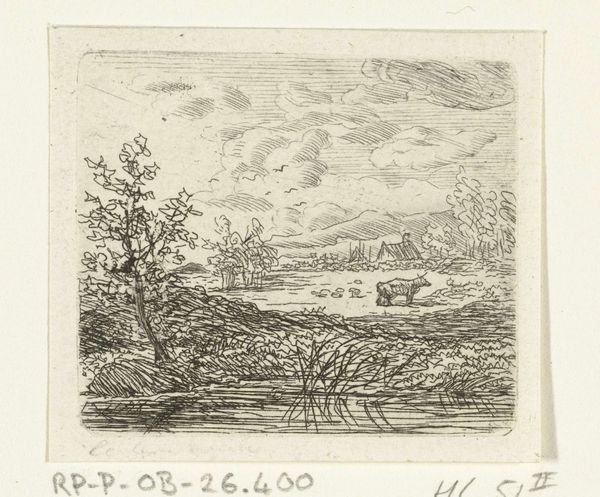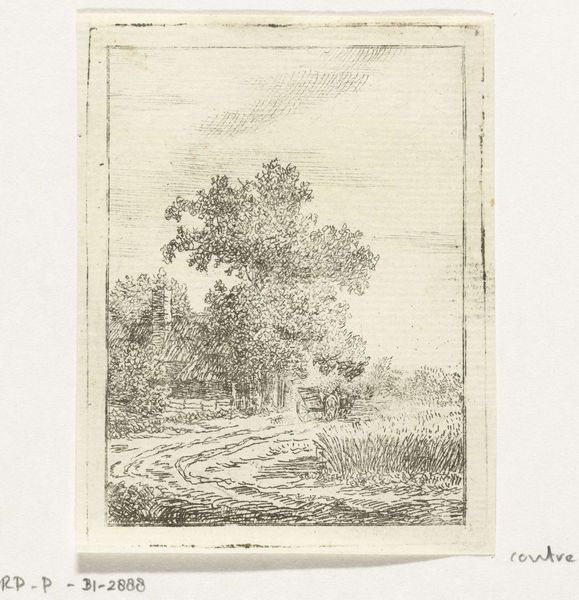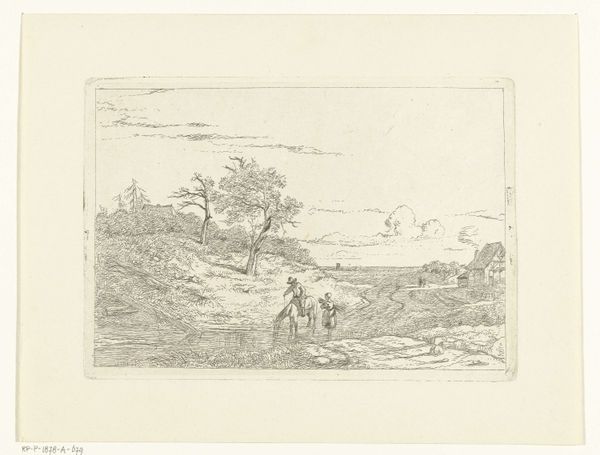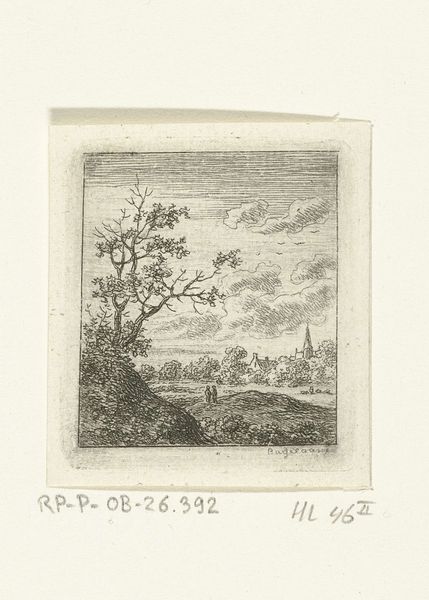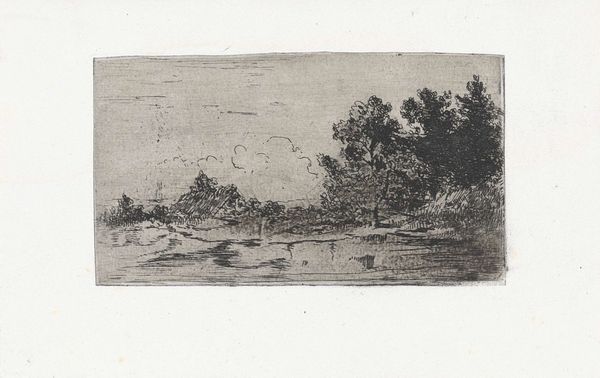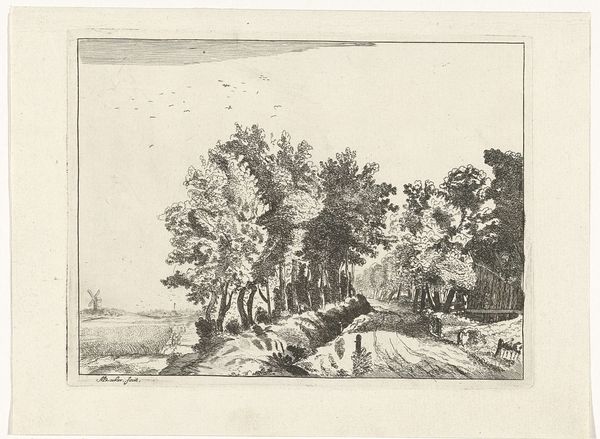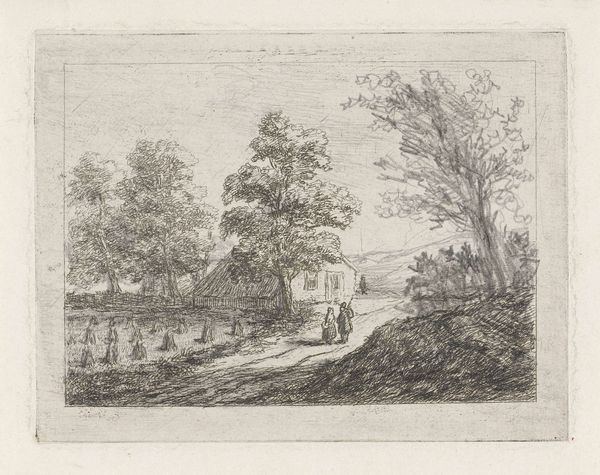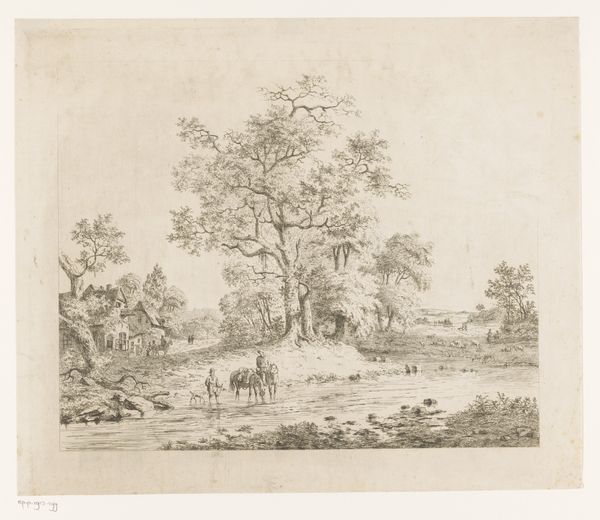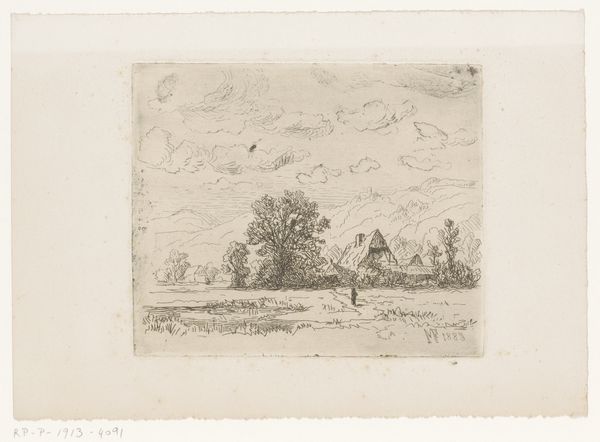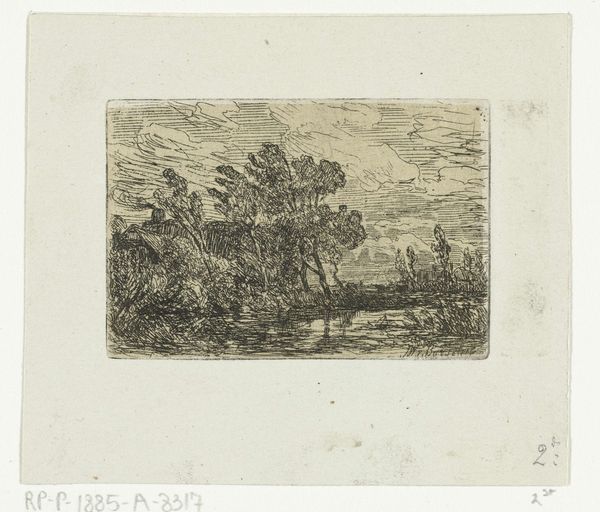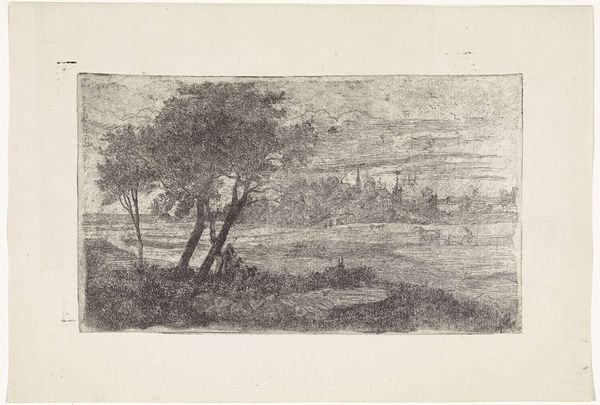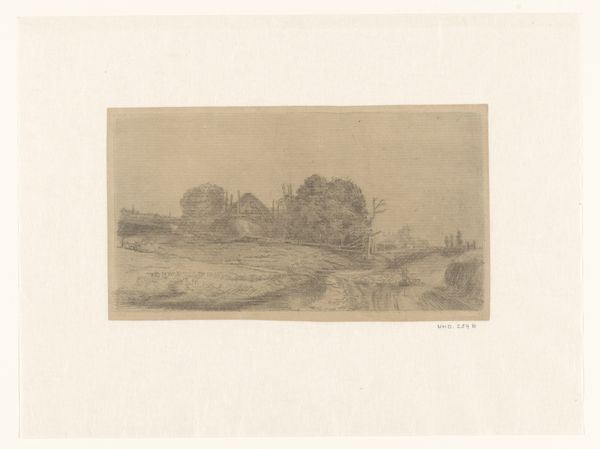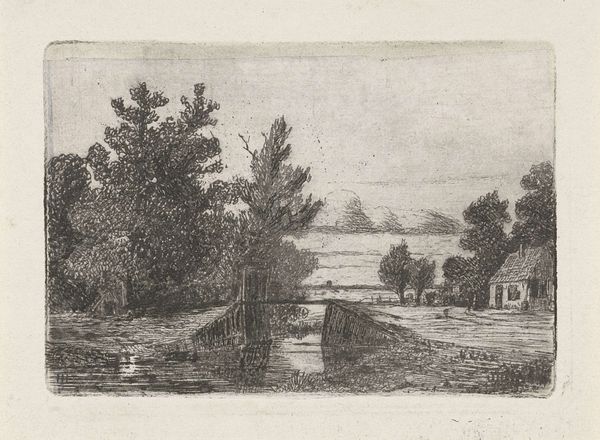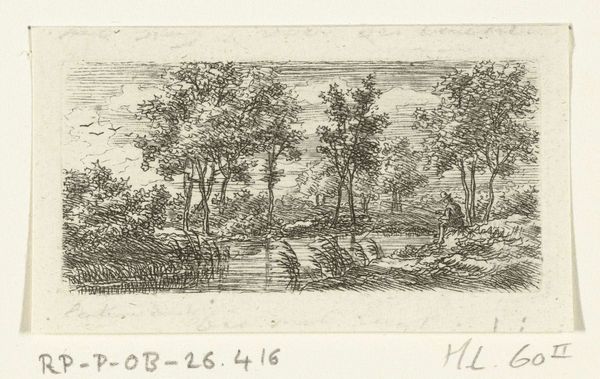
drawing, etching, engraving
#
drawing
#
etching
#
landscape
#
figuration
#
line
#
engraving
#
realism
Dimensions: height 50 mm, width 53 mm
Copyright: Rijks Museum: Open Domain
Curator: Ernst Willem Jan Bagelaar created this etching and engraving sometime between 1798 and 1837. It's titled, "Waterlandschap met koe," which translates to "Water landscape with cow." My immediate impression is tranquility—despite the sharp lines, there's a palpable sense of serenity. Editor: It's interesting how the seemingly simple depiction of rural life carries significant weight when viewed through a social lens. Landscapes during that period weren't just pretty pictures; they were often intertwined with notions of land ownership and social structures. Who controlled this pastoral scene? Who profited from the cow’s labor? Curator: Certainly, but there’s also the romanticization aspect. By that point, urbanization was changing the very fabric of Dutch society. So, prints like this appealed to those yearning for simpler times, a retreat to nature as a balm for social anxiety. What do you think about Bagelaar’s technique in capturing light and shadow, creating depth with such fine lines? Editor: I find that Bagelaar effectively used accessible media to perpetuate or, at least, participate in contemporary narratives. These prints circulated among a wide audience, shaping perceptions and ideals about rural life, reinforcing—or perhaps challenging—established power dynamics through subtle visual cues and symbolic language. This print would have been acquired by ordinary collectors with an interest in representations of land. Curator: Do you think he intended to challenge social power dynamics directly? Perhaps he was more focused on offering a momentary escape, or recording a landscape as it faded, contributing to that early wave of Romantic pastoral landscape painting? The details–the cow wading, the birds flying in the distance—aren't there universal ideas that they touch on? Editor: Yes, to think critically about any work means embracing that complexity, recognizing its intersections with broader political and social dialogues rather than isolating it within traditional art historical narratives. Perhaps by encouraging reflection on its themes and the conditions of its production, we ensure that these quiet depictions resonate in more profound ways. Curator: A useful point. Context allows us a fresh and interesting view into the images and their creators. Editor: Indeed. We’re better equipped to understanding its purpose when viewed against the history in which the art was created.
Comments
No comments
Be the first to comment and join the conversation on the ultimate creative platform.
